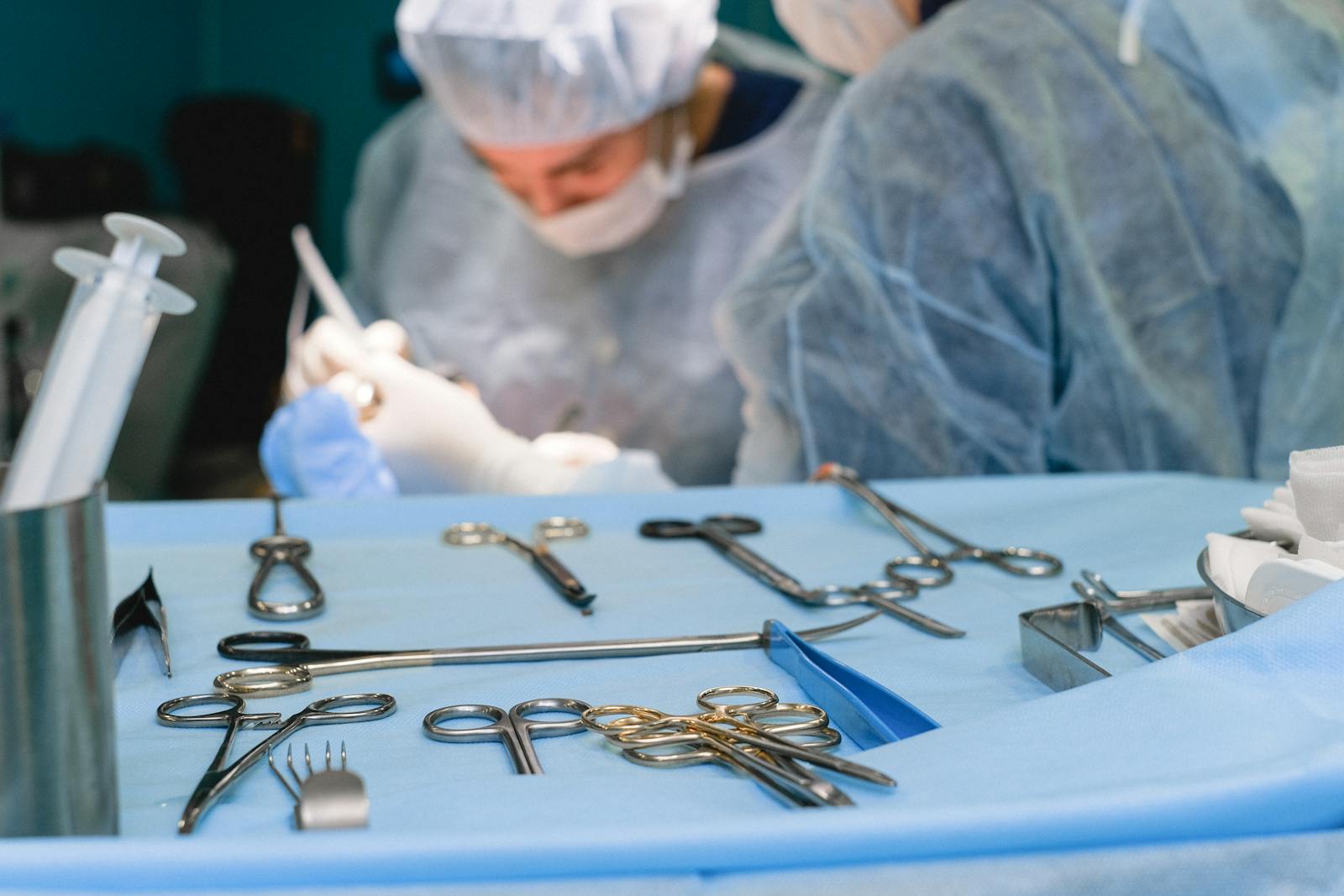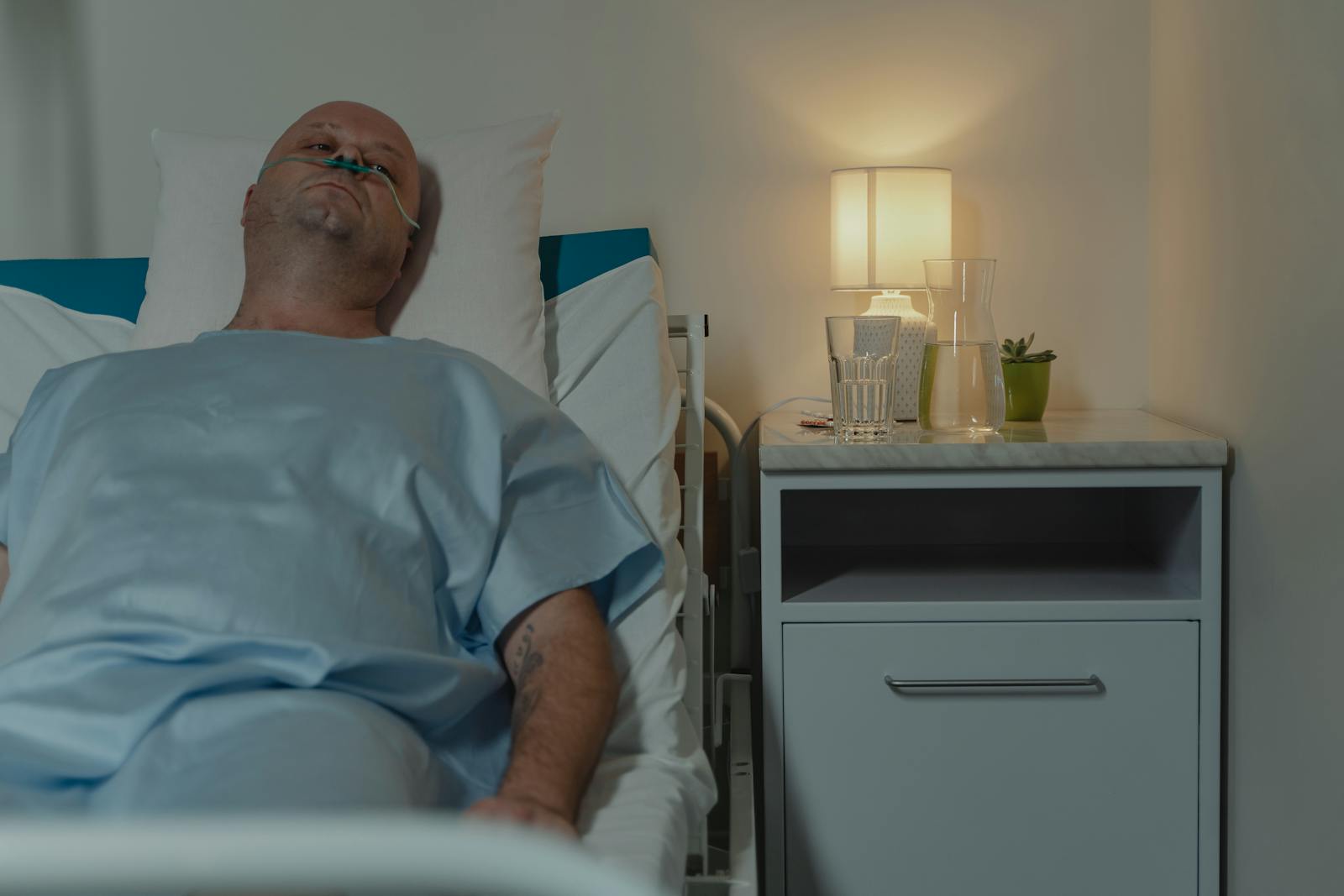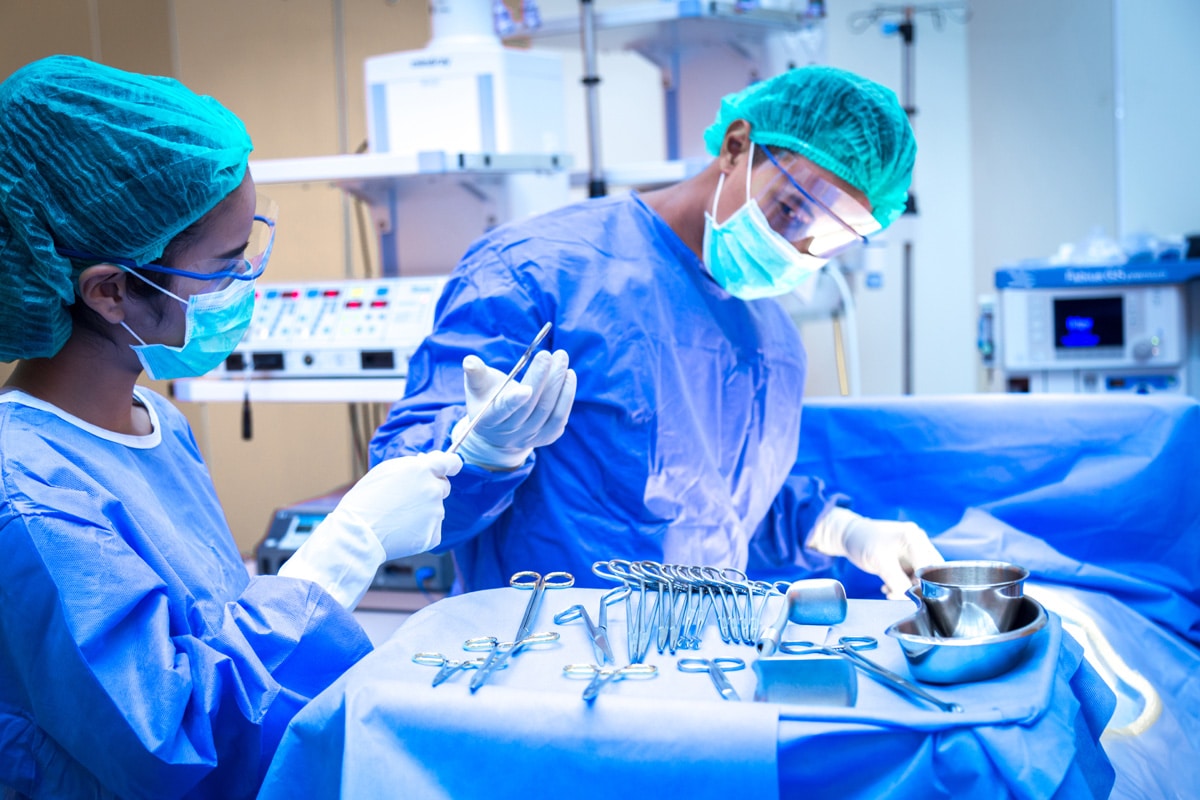As we explore the journey of recovery after neck fusion surgery, it’s important to understand that this process is all-encompassing, involving not only physical rehabilitation and pain management but also psychological support to navigate through the challenges that arise. The road to recovery can be paved with unexpected turns, and each person’s experience is unique. In the following discussion, we aim to offer a thorough view of what to expect post-surgery, while addressing the potential complications, and sharing insights into maintaining a healthy lifestyle following this procedure.
Understanding Neck Fusion Surgery
Delving into the intricacies of neck fusion surgery, it is a complex procedure that involves the joining of two or more neck vertebrae into a single, solid section of bone. This surgical intervention is typically employed to alleviate significant pain or to correct spinal instability. Patients may experience discomfort due to conditions such as herniated discs, spinal stenosis, or degenerative disc disease, for which neck fusion surgery can provide relief.
However, amidst the discussions of this procedure, several fusion misconceptions have arisen. It is crucial to dispel these to guarantee patients have a clear understanding of the procedure. Contrary to popular belief, neck fusion surgery is not the first treatment option but rather a last resort when conservative methods have failed. These methods, also known as surgery alternatives, might include physical therapy, pain management through medication, chiropractic care, and lifestyle changes.
The decision to undergo neck fusion surgery is typically made after careful consideration of the patient’s condition, the potential benefits and risks of the surgery, and the effectiveness of non-surgical alternatives. As a result, patients should be thoroughly informed and involved in the decision-making process to ensure the best possible outcomes.
Immediate Post-Op Experience
In the immediate aftermath of neck fusion surgery, two primary concerns are pain management and mobility. Effective strategies for managing post-operative discomfort are important for both patient comfort and the healing process. Likewise, understanding the extent and safe limits of mobility after surgery can greatly impact the speed and effectiveness of recovery.
Pain Management Strategies
While recovery from neck fusion surgery varies from patient to patient, it is essential to have an effective pain management strategy to guarantee a comfortable immediate post-operative experience. This often involves a combination of medication options and alternative therapies.
- Medication Options: Pain can be managed using prescribed medications, which can include opioids for severe pain, non-steroidal anti-inflammatory drugs, or acetaminophen for milder pain. It is critical to use these as directed by a healthcare professional to manage pain effectively and minimize side effects.
- Alternative Therapies: Techniques such as physical therapy, acupuncture, or mindfulness-based stress reduction can supplement medication use and offer non-pharmaceutical pain relief.
- Individualized Approach: Lastly, remember that each patient’s pain management strategy will be unique, tailored to their pain levels, overall health, and personal preferences.
Mobility After Surgery
After ensuring a comfortable post-operative experience through effective pain management, the next significant aspect to contemplate is the patient’s mobility following neck fusion surgery. The ability to perform basic functions like driving post-surgery or adopting a position to sleep comfortably can be impacted.
Initially, a cervical collar may be required to stabilize the neck, limiting mobility. However, this is a temporary measure and as healing progresses, the collar is typically phased out. Patients are advised not to drive until they can move their neck freely and safely. Sleeping can be challenging, but using a special neck pillow can provide support and comfort. Physical therapy is often recommended to gradually regain mobility and strength. The process requires patience, adherence to medical advice, and a positive attitude towards recovery.
Pain Management Techniques
Managing pain effectively is an essential aspect of recovery following neck fusion surgery, and several techniques can be employed to guarantee comfort and promote healing. Among these techniques, the utilization of alternative therapies and understanding acupuncture benefits can greatly enhance pain management.
- Over-the-Counter Medications and Prescriptions: Non-prescription drugs like acetaminophen and ibuprofen can provide relief from mild to moderate discomfort. For more severe pain, doctors may prescribe narcotics or muscle relaxants, but these should be used judiciously due to their potential for addiction.
- Alternative Therapies: These include techniques like biofeedback, massage, and relaxation exercises. They can be particularly beneficial in managing chronic pain and reducing reliance on medication. Acupuncture, one of these alternative therapies, has been shown to offer significant benefits in pain management. It involves the insertion of tiny needles at specific points on the body to alleviate pain.
- Heat and Cold Therapy: Alternating between heat and cold can help reduce inflammation and soothe discomfort. While cold therapy reduces blood flow and numbs the painful area, heat therapy stimulates blood flow and helps muscles relax.
These techniques, when used appropriately, can greatly improve the post-surgery recovery process and enhance the patient’s quality of life.
Physical Therapy and Rehabilitation
Physical therapy and rehabilitation are integral to the recovery process following neck fusion surgery. The initial post-surgery exercises are designed to restore mobility and reduce discomfort, while the long-term rehabilitation plans are tailored to strengthen the neck muscles and improve flexibility. It is also crucial to discuss strategies for managing pain during therapy to guarantee a comfortable and effective recovery journey.
Initial Post-Surgery Exercises
In the initial stages following neck fusion surgery, carefully curated exercises play a pivotal role in expediting recovery and restoring full range of motion. These exercises focus on three principal areas:
- Scar tissue management: Gentle neck stretches and rotations help to break up scar tissue, reducing discomfort and allowing for greater neck mobility.
- Incision care: Proper care of the surgical wound is essential to prevent infection. This includes gentle cleaning and keeping the area dry.
- Strengthening exercises: Initially, these may consist of gentle isometric exercises to strengthen the neck without straining the surgical site.
Long-Term Rehabilitation Plans
As the initial post-operative phase concludes, the focus of the patient’s recovery shifts towards long-term rehabilitation plans, incorporating more extensive physical therapy and rehabilitation strategies. These strategies are tailored to the individual, aiming to restore mobility, strength and flexibility.
Nutritional support is an essential component of this rehabilitation plan. A balanced diet, rich in proteins and vitamins, aids in tissue repair and enhances recovery. Supplemental nutrition may also be recommended to meet the increased metabolic demands post-surgery.
Emotional well-being is equally important in this phase. The patient may experience feelings of frustration due to limited mobility or slower-than-expected progress. Psychological support, through counseling or support groups, can help patients cope, promoting a positive mindset which is indispensable for successful rehabilitation.
Managing Pain During Therapy
During the course of post-operative rehabilitation, managing discomfort and pain becomes a paramount concern to guarantee the patient’s active participation in physical therapy sessions. This process involves a holistic approach, incorporating medical treatments along with alternative therapies and mindfulness techniques.
- Pain Medication: Physicians may prescribe medication to help manage post-surgical pain. It’s important to use these as directed to avoid potential side effects or dependency issues.
- Alternative Therapies: Treatments such as acupuncture, massage, or chiropractic interventions can complement traditional medical approaches, offering additional relief from discomfort.
- Mindfulness Techniques: Mind-body practices like meditation or deep-breathing exercises can help patients manage pain perceptions, reduce stress, and enhance overall well-being. These techniques are beneficial for long-term pain management strategies.

Potential Complications and Risks
While neck fusion surgery can often provide significant relief, it’s important to understand the potential complications and risks that could arise post-operation. This includes infection, which is a key concern and requires vigilant infection prevention strategies. It’s essential to maintain a clean environment, proper wound care, and follow all prescribed antibiotic regiments to reduce the risk of infection.
Another potential complication is the development of excessive scar tissue. This can lead to stiffness, discomfort, and may even interfere with the successful fusion of the spinal vertebrae. Scar tissue management, thus, plays an important role in recovery. This can involve targeted physical therapies and massage, which can help enhance mobility and limit scar tissue formation.
Other risks include nerve injury, which can cause pain, numbness, or weakness, and pseudoarthrosis, a condition where the vertebrae fail to fuse. Hardware failure, such as broken screws or plates, is also a possibility. Additionally, adjacent segment disease, a condition where the vertebrae next to the fused section begin to degenerate, can occur.
Understanding these potential risks underscores the importance of informed decision-making and diligent post-operative care to mitigate these risks.
Importance of Post-Op Follow Ups
Regular post-operative appointments play a crucial role in evaluating the healing progression, identifying any potential complications early, and adjusting treatment strategies as necessary after neck fusion surgery. This underlines the follow-up importance in ensuring a steady and healthy recovery trajectory.
Three key reasons emphasize the necessity of regular consultations:
- Monitoring Healing Progress: Post-op follow-ups allow the medical team to assess the patient’s recovery progress. This includes evaluating the surgical site, checking for signs of infection, and ensuring the neck fusion is healing as expected.
- Early Detection of Complications: Regular appointments can help detect potential issues early, including infection, hardware failure, or non-union of the fused vertebrae. Early detection can lead to prompt interventions, reducing the risk of serious complications.
- Adjusting Treatment Plan: Follow-ups provide an opportunity to adjust pain management strategies, physiotherapy regimens, and overall recovery plans based on the patient’s progress and comfort levels.
Adjusting to Daily Life
Beyond the medical follow-ups and adjustments to treatment plans, there is also the significant aspect of managing daily life post neck fusion surgery. A vital part of this process is emotional coping. It’s important to recognize the psychological impact of the surgery and the changes it brings. Feelings of frustration or sadness are not uncommon and should be addressed with the help of mental health professionals if necessary.
Patients should also be prepared for alterations in their sleep patterns, as sleep adjustments are often required. Neck fusion surgery can cause discomfort that affects sleep quality in the early stages of recovery. Adapting to new sleeping positions that support the neck and reduce pain is crucial.
Moreover, daily tasks may initially seem more challenging. It’s important for patients to gradually reintroduce regular activities into their routines, avoiding sudden or strenuous movements that could exacerbate discomfort or delay healing.
Long-Term Benefits of Neck Fusion
The long-term benefits of neck fusion surgery are manifold and often transformative for patients. The two primary points of focus are pain reduction and improved mobility, both of which greatly enhance the quality of life post-surgery. Stability, another critical advantage, is also worth noting as it often results in a notably safer and more comfortable physical experience for individuals.
Pain Reduction Post-Surgery
In the aftermath of neck fusion surgery, patients often experience a significant decrease in pain, which manifests as one of the long-term benefits of this procedure. This profound reduction in discomfort enables patients to gradually resume their daily activities and improve their overall quality of life.
- Alternative treatments: Pain reduction post-surgery decreases the necessity for alternative treatments, such as painkillers and physical therapy. This reduces the associated costs and possible side effects.
- Emotional recovery: Alleviation of chronic pain often leads to improved mental health, as patients are less burdened by the constant discomfort and can focus on their emotional recovery.
- Improved sleep: With diminished pain, patients typically experience better sleep, which is vital for overall health and recovery post-surgery.
Improved Mobility and Stability
Alongside the notable reduction in pain, neck fusion surgery also offers patients enhanced mobility and stability, two other long-term benefits that greatly improve their quality of life. Surgical expectations should include a progressive return to normal movement, with the fused portion of the neck providing a solid, stable base that mitigates previous instability. As the healing process unfolds, patients often discover a newfound ability to perform daily activities without the limitations imposed by their pre-operative condition. Lifestyle adaptations may be necessary, but these are generally minor and designed to protect the integrity of the surgical site. Over time, these adjustments become a natural part of their daily routine, further enhancing the long-term benefits of improved mobility and stability after neck fusion surgery.

Potential Long-Term Challenges
Often, patients who undergo neck fusion surgery may encounter a series of long-term challenges post-procedure. These may range from physical discomfort to emotional distress.
- Emotional Impact: Neck fusion surgery can induce emotional strain in patients. The long recovery period, the potential for chronic pain, and changes to lifestyle can lead to feelings of depression and anxiety. It’s important for patients to seek the appropriate mental health support and therapeutic interventions to cope with these psychological effects.
- Therapy Alternatives: Patients may need to explore various therapy alternatives post-surgery. These can include physical therapy to improve mobility and strength, occupational therapy to adjust to new ways of performing daily tasks, and pain management programs for those dealing with chronic discomfort.
- Post-Surgery Complications: Some patients may face potential complications after surgery, including infection, nerve damage, and problems related to the hardware used in the procedure. Regular follow-ups with the healthcare provider are essential to monitor and address these issues promptly.
Understanding these potential challenges can help patients better prepare for their recovery journey after neck fusion surgery. It is always important to maintain an open line of communication with the healthcare team to address concerns and manage expectations effectively.
Maintaining a Healthy Lifestyle
Adopting a healthy lifestyle post-surgery is a vital component in ensuring a successful recovery and minimizing potential complications. This includes focusing on two important aspects: dietary adjustments and sleep quality.
Dietary adjustments are essential after neck fusion surgery. Patients should opt for nutrient-dense foods that promote bone health and tissue repair. Consuming a balanced diet rich in protein, calcium, and vitamins D and C can speed up the healing process. Additionally, hydration is important, as it aids in maintaining ideal body functioning and supports the healing process. Avoiding alcohol and nicotine, which can impede bone growth and healing, is also recommended.
Improving sleep quality is another significant aspect of maintaining a healthy lifestyle post-surgery. Adequate rest allows the body to heal and regenerate. Patients should aim for at least seven to nine hours of sleep each night. Sleep quality can be enhanced by maintaining a regular sleep schedule, creating a calm and restful sleep environment, and avoiding stimulants like caffeine close to bedtime.
Mental Health After Surgery
Just as physical wellbeing is paramount after neck fusion surgery, mental health too plays a critical role in the recovery process. Emotional recovery and stress management are essential for a successful rehabilitation journey. It is important to acknowledge the psychological impact of surgery and its implications on the patient’s mental state.
- Stress Management: Post-operative stress can be a major hurdle in the recovery process. It is vital to adopt stress management techniques such as meditation, deep breathing, or progressive muscle relaxation. These methods can help reduce anxiety, improve mood, and promote a sense of tranquility.
- Emotional Recovery: Surgery can trigger a myriad of emotions ranging from fear to relief. To facilitate emotional recovery, seeking emotional support from peers, family, or support groups is advisable. Therapeutic interventions like counseling or psychotherapy can also be beneficial.
- Cognitive Exercises: Engaging in cognitive exercises like problem-solving or memory tasks can help maintain mental health. These activities stimulate the brain, reduce feelings of depression, and improve overall cognitive function.
It’s essential not to underestimate the importance of mental health in the post-operative phase. Remember, a healthy mind fosters a healthy body.
Success Stories and Patient Experiences
While each patient’s journey is unique, numerous success stories and personal experiences provide valuable insights into the recovery process following neck fusion surgery. Patient testimonials often highlight the reduced pain and increased mobility they experience post-surgery, bringing a sense of hope and optimism to those contemplating or awaiting the procedure.
For instance, a 56-year-old man shared his successful shift from debilitating neck pain to having a quality life filled with physical activities, attributing it to his neck fusion surgery. Similarly, a professional ballet dancer expressed her gratitude towards the surgery that allowed her to resume her passion without any discomfort.
However, it’s important to remember that surgery may not be the ideal solution for everyone. Fusion alternatives, such as physical therapy, pain management, or minimally invasive procedures, have also yielded positive results for some patients. A testimonial from a 68-year-old woman revealed her successful recovery from chronic neck pain through a combination of physiotherapy and pain management without undergoing surgery.
These patient experiences underscore the importance of a personalized treatment approach, highlighting the need for patients and healthcare providers to explore all options before deciding on a treatment pathway.
Frequently Asked Questions
What Alternative Treatments Exist Aside From Neck Fusion Surgery?
Alternative treatments to neck fusion surgery include chiropractic care, renowned for its beneficial impact on spinal health, and acupuncture, which has demonstrated efficacy in alleviating neck pain and improving mobility.
Will I Need to Adjust My Diet After the Surgery?
Regarding post-surgery nutrition, there are no specific dietary restrictions after neck fusion surgery. However, balanced recovery meal planning with adequate protein and vitamins can promote healing and strength regain.
Can I Continue With My Regular Sports Activities Post-Surgery?
Resuming regular sports activities post-surgery largely depends on your recovery timeline and physical therapy progress. It’s important to follow medical advice for a safe and effective return to your athletic pursuits.
How Will Neck Fusion Surgery Impact My Sleep Patterns?
Neck fusion surgery may temporarily disrupt sleep patterns. Pillow adjustments and sleep positioning are essential in post-operative comfort. Proper alignment can minimize discomfort, facilitating better sleep as your body recovers from the surgical procedure.
Will the Surgery Affect My Ability to Drive?
Post-operative effects of surgery may temporarily impair driving comfort due to neck mobility restrictions. Vehicle adaptations may be necessary for a short period until full recovery. Always consult your doctor before returning to driving.

